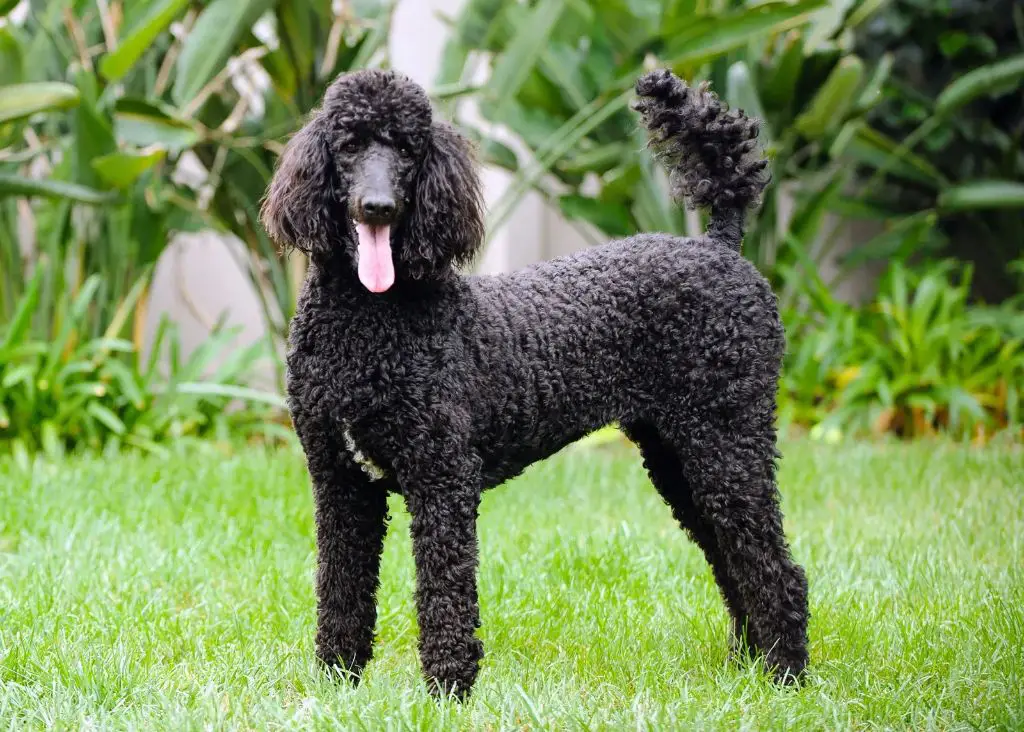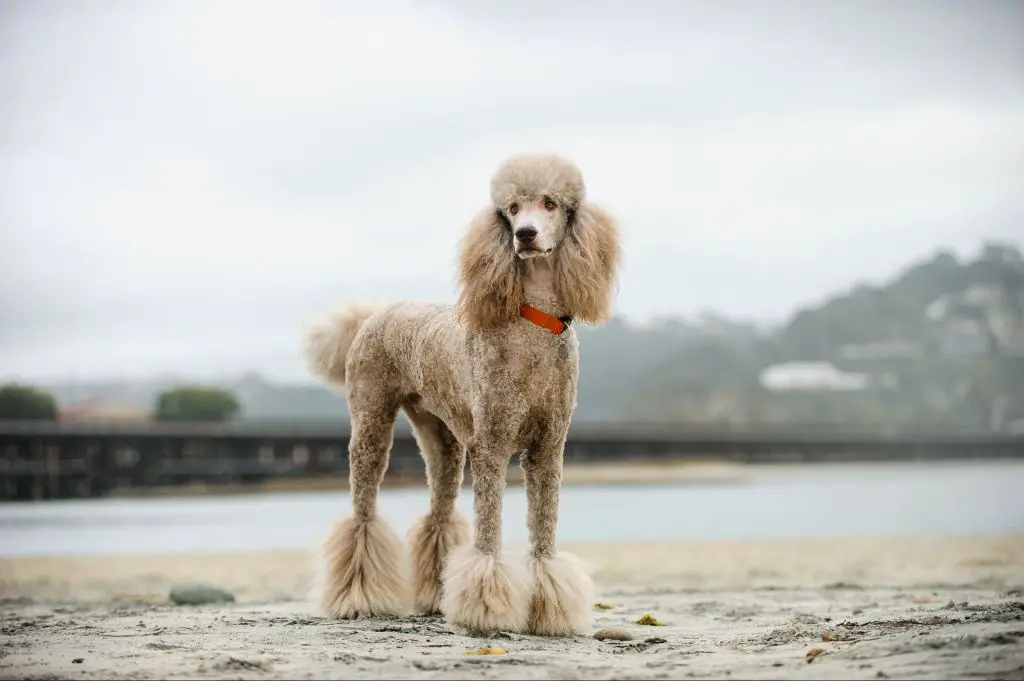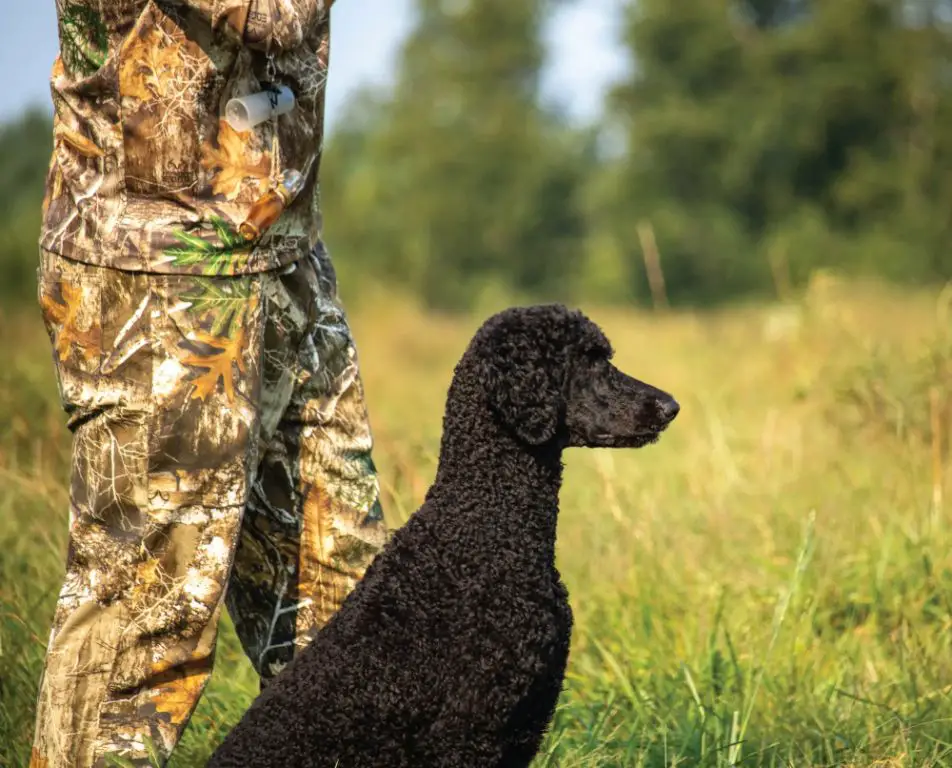History of Poodles
The Poodle originated in Germany, despite being known as the national dog of France. The breed name comes from the German word “pudel” or “pudelin,” which referred to the splashing in water that the breed was known for. Poodles were used as water retrievers, assisting hunters by retrieving waterfowl for them.
Poodles started gaining popularity in France in the 17th century. The French began developing them into the stylized breed we know today, clipping their fur into the elaborate continental and English saddle styles. The Poodle was recognized as a distinct breed in France and Germany by the 15th and 16th centuries.
The American Kennel Club first recognized the Poodle in 1887. The breed quickly became popular in the United States as both a show dog and family pet due to their intelligence, trainability, and hypoallergenic coat.
Sources:
https://en.wikipedia.org/wiki/Poodle
https://www.akc.org/expert-advice/lifestyle/10-facts-about-poodles/
Physical Traits

Poodles come in three size variations – standard, miniature, and toy. According to the American Kennel Club, standard poodles stand over 15 inches tall, miniature poodles are 10 to 15 inches, and toy poodles are under 10 inches. Despite the size differences, they share many of the same physical traits.
One of the most distinguishing features of poodles is their hypoallergenic coats. Poodles are light-shedding dogs, making them a good choice for people with allergies. Their coats are made up of dense, curly hair that continues to grow and requires regular grooming and clipping. Poodle coats come in a variety of solid colors including black, white, brown, gray, apricot, red, silver, blue, and cafe-au-lait.
In addition to being hypoallergenic and low-shedding, poodles are known for having an elegant, distinguished appearance with long tapered muzzles, oval eyes, long necks, and straight tails. Their fur is usually clipped short around the face, feet, base of the tail, and torso, while fur is left longer over the body.
Grooming
Poodles require frequent grooming and brushing to maintain their characteristic clip styles. Unlike many breeds, poodles have hair rather than fur, which means their hair keeps growing and does not shed. Without regular grooming, a poodle’s hair can become severely matted.[1]
Poodles should be thoroughly brushed at least every other day. Frequent brushing prevents mats and tangles from forming in the long, curly coat. Using a slicker brush and metal comb ensures the coat is smooth and knot-free.[2]
To maintain their signature clips, poodles require professional grooming every 4-8 weeks. The exact grooming schedule depends on the preferred length of the coat. Popular poodle clips include the Continental, English saddle, summer clip, puppy clip, and Miami.[3] Keeping up with regular brushing and professional grooming is essential for a poodle’s health and appearance.
Temperament
Poodles are known for being highly intelligent dogs with energetic and sensitive personalities. They are extremely loyal to their owners and family members.[1] Their high level of intelligence makes them very trainable and they often excel in obedience competitions and canine sports. Poodles are quick to pick up on commands and tricks.
While poodles have an energetic side, they also know when it’s time to relax. They enjoy being close to their owners whether it’s actively playing or quietly cuddling. Poodles form strong bonds and become very attached to their people.
Their sensitive nature can make some poodles prone to anxiety issues if not properly socialized from a young age. With early socialization and training, poodles can be very adaptable dogs. Their loyalty and eagerness to please makes them wonderful companions when their needs for both mental stimulation and human interaction are met.
[1] https://www.petplan.co.uk/pet-information/dog/breed/poodle/
Training
Poodles are known as one of the most intelligent and trainable breeds, making them an excellent choice for obedience, trick training, and more advanced skills like agility. They typically pick up new commands with ease and can master complex routines. According to the American Kennel Club, poodles excel in obedience training and consistently rank high in competitions. Their people-pleasing nature makes them highly motivated to learn and perform. With positive reinforcement training methods, poodles of all sizes can successfully learn basic obedience, tricks, house training, and leash manners starting from a young puppy through adulthood.

Poodles are often considered easier to train than many other breeds due to their intelligence and eagerness to please. However, early socialization and training is still important to develop good behaviors. Their energetic nature may require more exercise and mental stimulation to prevent problem behaviors like chewing. Overall, poodles’ combination of smarts, athleticism, and desire to work with people makes them one of the top choices for those interested in training their dog for competition, tricks, or even as a service dog.
Activity Level
Standard Poodles have a high activity level and need a lot of regular exercise and stimulation. The minimum recommended amount of exercise for a healthy adult Standard Poodle is typically around 50-60 minutes per day (Source). This can be a combination of structured walks and free play or running time in a safely enclosed area. Standard Poodles were originally bred as working and sporting dogs, so they have a lot of energy and stamina. Without enough daily exercise they are prone to developing destructive behaviors from pent-up energy and boredom.
In addition to physical exercise, Standard Poodles also need a lot of mental stimulation and training to keep their intelligent minds engaged. Activities like obedience training, trick training, agility, and interactive puzzle toys are great ways to provide mental exercise. Standard Poodles thrive when they have a job to do and are challenged both physically and mentally. Providing adequate daily activity is key to having a happy, healthy Standard Poodle.
Health
Poodles are generally healthy dogs with a life expectancy of 10-18 years. However, like all breeds, they are prone to certain health conditions.
One of the most common health issues seen in poodles is bloat. This is a life-threatening condition where the stomach fills with air and twists, cutting off blood flow. It requires immediate veterinary care. To reduce bloat risk, avoid exercising before or after meals and use slow-feed bowls.[1]
Addison’s disease, or hypoadrenocorticism, is another concern, especially in standard poodles. This is an endocrine disorder where the adrenal glands don’t produce enough hormones. Symptoms include lethargy, vomiting, and poor appetite. It is manageable with medication and diet changes.[2]
Other issues poodles may encounter include hip dysplasia, hypothyroidism, epilepsy, and eye diseases like progressive retinal atrophy. Overall though, with proper care poodles tend to remain active and healthy well into their senior years.
[1] https://www.lucypetproducts.com/blog/5-most-common-poodle-health-issues/
[2] https://poodleclubofamerica.org/health-concerns/
Popularity

The poodle is one of the most popular dog breeds in the United States and around the world. According to the American Kennel Club, poodles ranked 6th most popular breed in 2022, down two spots from 2021. Though their popularity has fluctuated over the years, poodles have remained in the top 10 most popular breeds in the US for over a decade now.
Poodles are also consistently ranked in the top 10 most popular breeds worldwide. The Fédération Cynologique Internationale places poodles as the 9th most popular breed for 2021. Their worldwide popularity is likely due to their intelligence, low-shedding coats, and variety of sizes from toy to standard poodle.
While less popular than breeds like Labrador retrievers and German shepherds, poodles have carved out a spot among the preferred breeds for many dog owners over the years. Their distinctive curly coats and energetic personalities make poodles a popular choice.
Roles
Poodles have historically served many important roles for humans. Originating as water retrievers, they were bred to be excellent hunting companions and to retrieve waterfowl for hunters. Their athletic build, intelligence, and swimming abilities made them well-suited for this job. While they aren’t commonly used as hunting dogs today, some poodle owners still train them for this traditional role.
In more modern times, poodles have become incredibly popular as show dogs. Their dense, curly coats can be groomed and styled in elaborate ways. Poodles are the national dog breed of France, and their show career began there in the 17th century. Now, they consistently rank as one of the most popular breeds at major dog shows around the world, including Westminster and Crufts.
Poodles also work extensively as service dogs. Their trainability and hypoallergenic coats make them well-suited for this role. Poodles often work as guide dogs for the blind, hearing dogs for the deaf, medical alert and response dogs, and more. They can be trained to perform a wide variety of tasks to assist people with disabilities.
Comparison to Other Breeds

Poodles stand out from other dog breeds in several ways. Many sources consider poodles to be more intelligent and energetic than the average dog. Their intelligence makes them highly trainable. Poodles often excel at agility, obedience competitions, and other canine sports. Their energetic nature requires sufficient daily exercise and mental stimulation. Without it, poodles may become bored and destructive.
Poodles also tend to shed less than many breeds. Their curled coats catch and hold loose hairs. Regular brushing and grooming helps remove shedding hair. Poodles are often a good choice for people with allergies. However, no dog is completely non-shedding. Poodles do require professional grooming every 4-6 weeks. Their hair continuously grows and requires clipping.
In comparison to other popular breeds like Labrador Retrievers and Golden Retrievers, poodles are often more energetic and eager to learn new things. Their intelligence gives them an edge when mastering training concepts. Poodles aim to please their owners. They are also lower shedding than heavy shedding breeds like German Shepherds. With proper care, poodles make excellent companions.
